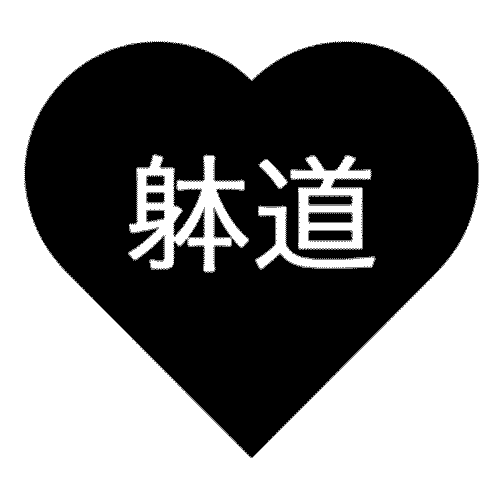As far as I knew when I was starting out, there were only six hokei in Taido. I was off by a bit. Taido has five kinds of hokei. Each type of hokei looks totally different from the other types. This is because they are each designed to practice different things. Firstly, there are the six -tai hokei which focus on one of each of Taido's basic technique types. The reason we have six -tai hokei is that untai no hokei was changed at one point. The version most-practiced in the US is the old version. The rest of the world practices the newer one (which we call shin-untai no hokei in the States). These hokei are the basis of Taido practice for most students. They include most of Taido's basic techniques and can be used to practice the basic theoretical concepts. After that, there are five -in hokei. This is the feminine version of the hokei. In the modern era, we suggest that all students learn both the -tai and -in hokei sets. These hokei feature a lot of ryunen dachi (like jodan kamae) which build your legs, and most of the hand strikes are nukite. None are as athletic as some of the -tai hokei, but they are very difficult to perform smoothly and accurately. The third kind of hokei we learn is the -mei hokei, which are designed for developing control over the breath, energy, and muscles. There are three -mei hokei. These hokei are typically only taught to older students, and that's a real shame. Actually, many instructors claim that seimei no hokei should often be used as a warm-up for practice, but very few of them ever do this in their classes. Since it's slow, most people can copy and keep up with seimei, but katsumei and enmei are only taught to black belts over a certain age, so they are very seldom seen by most students. Next, there are three -sei hokei, which include techniques more suited to self-defense than the other hokei. In fact, they look much more karate-like. We have low kicks, elbow strikes, throws, blocks, and all kinds of other fun things which seem to be lacking in the general canon of Taido technique. These hokei are usually only taught to students above 3dan - the idea being that young, able-bodied folks should be able to use more physically-demanding moves. Finally, there are two -gen hokei, which include pieces of all of the above. These are sort of omnibus hokei, and as such are pretty long compared to the other types. Yogen is sometimes set to music. Ingen is basically senin no hokei with an extra bit added at the end. Very few people actually know these hokei because they are reserved for those with high ranks. These are kind of the "master hokei" of Taido. There is also an old hokei, called taii, that is "no longer practiced" because it was designed for use during the transition from Genseiryu karate to Taido. Few people actually remember how to do this hokei (because very few people have been around long enough to have learned it. Back when it was part of the curriculum, it was only a requirement for 4dan), and none of them do it the same way exactly. Since it is not normally taught to students, those of us who know it sometimes get a few odd looks when we practice this hokei.
So here's the list:
-tai hokei
- (old [American]) un
- sen
- un (the one everyone else does, called "shin-un" in America)
- hen
- nen
- ten
-in hokei
- sen
- un
- hen
- nen
- ten
-mei hokei
- sei - exploratory breathing practice
- katsu - combines breathing techniques with defensive movements
- en - includes aspects of the previous -sei hokei at a deeper level
-sei hokei
- ten - defensive applications of hand techniques
- chi - defensive applications of foot techniques
- jin - defensive applications focussing on elbow strikes
-gen hokei
- in - senin, plus. I actually really like this hokei after a -mei hokei for warming up.
- yo - anybody for a sing-along? When performed without the music, this is a very cool hokei, combining aspects of the -tai, -mei, and -sei hokei sets. Let's save the song for karaoke night.
the "lost" hokei (not part of any of the above categories)
- taii - includes many techniques from Genseiryu and the koryu kata that Shukumine practiced as a young man (primarily Bassai and Kushanku). The only hokei that includes all five of Taido's movements.
